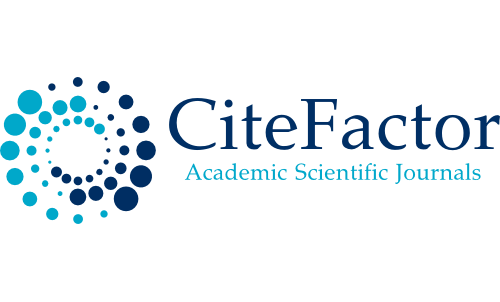SISTEM PENDUKUNG KEPUTUSAN PENERIMAAN KARYAWAN DENGAN METODE AHP TOPSIS (Studi Kasus: PT. Global Retailindo Pratama)
DOI:
https://doi.org/10.31598/sintechjournal.v2i1.321Keywords:
AHP, TOPSIS, Employees Selection, Decision Support SystemAbstract
To get good employees, a good selection process is needed. From the results of the interview, PT. Global Retailindo Pratama uses four criteria for the selection of new employees, education, intelligence, experience, and interviews. All prospective employees must take an exam to measure the criteria of education and intelligence and also have to send a photocopy of proof of their experience. The first stage selection is done to determine the prospective applicants who will take part in the interview. The second stage is conducted to determine the prospective employees who are accepted. The process of assessment and selection is still done by humans, so it takes a lot of time and energy. This problem can be solved by providing an information system for submitting applications and conducting examinations online. All documents are sent in digital form, also automaticlly checking answers from prospective employees. To select prospective employees, a method is needed that can recommend potential prospective employees based on specified criteria. The TOPSIS method is a decision support method that can provide recommendations in accordance with the criteria. The disadvantage of the TOPSIS method is that it requires weighting in the ranking process. The Analytical Hierarchy Process (AHP) method can be used to determine the criteria weight. Combining AHP and TOPSIS methods can produce more objective ranking results. Combining the AHP and TOPSIS methods can produce better recommendations.
Downloads
References
A. Rozaq, “Case Base Reasoning Untuk Menentukan Kebutuhan Bahan Bangunan Rumah,†SINTECH (Science Inf. Technol. J., vol. 1, no. 2, pp. 70–75, Oct. 2018.
A. Hijriani, A. Candra, N. Hardiansyah, and T. R. Andrian, “Analisa Dan Perancangan Perekrutan Karyawan Dengan Metode AHP Pada Sistem Berorientasi Service Studi Kasus Usaha Jasa Service Kendaraan,†in Seminar Nasional Sains & Teknologi V Lembaga Penelitian Universitas Lampung, 2013, pp. 19–20.
Gunawan, F. Halim, and Wilson, “Penerapan Metode Topsis Dan Ahp Pada Sistem Penunjang Keputusan Penerimaan Anggota Baru, Studi Kasus: Ikatan Mahasiswa Sistem Informasi,†JSM STMIK Mikroskil, vol. 15, no. 2, pp. 101–110, 2014.
A. L. Simanjuntak, “Sistem Pendukung Keputusan Pemilihan Lembaga Bimbingan Belajar Bagi Calon Peserta SBMPTN Dengan Metode TOPSIS,†Pelita Inform. Budi Darma, vol. VII, no. 3, pp. 6–12, 2014.
Y. Zai, M. Mesran, B. Nadeak, and I. Saputra, “PENERAPAN TECHNIQUE FOR ORDERS PREFERENCE BY SIMILARITY TO IDEAL SOLUTION (TOPSIS) UNTUK KEPUTUSAN PEMBERIAN KREDIT PADA CALON NASABAH (Studi Kasus : PT. SS Finance),†MEDIA Inform. BUDIDARMA, vol. 1, no. 1, Feb. 2017.
A. Setyadi, “IMPLEMENTASI AHP DAN TOPSIS UNTUK PENILAIAN DP3 DI PERGURUAN TINGGI,†J. Go Infotech, vol. 19, no. 1, Jan. 2017.
I. Herman Firdaus, G. Abdillah, F. Renaldi, and U. Jenderal Achmad Yani Jl, “SISTEM PENDUKUNG KEPUTUSAN PENENTUAN KARYAWAN TERBAIK MENGGUNAKAN METODE AHP DAN TOPSIS,†2016.
Kusrini, Konsep dan Aplikasi Sistem Pendukung Keputusan. Yogyakarta: Andi, 2007.
C. K. Fan and S. W. Cheng, “Using analytic hierarchy process method and technique for order preference by similarity to ideal solution to evaluate curriculum in department of risk management and insurance,†J. Soc. Sci., vol. 19, no. 1, pp. 1–8, 2009.
H. Purnomo and S. Kusumadewi, “Aplikasi logika Fuzzy untuk pendukung keputusan,†Yogyakarta Graha Ilmu, 2010.
Downloads
Published
How to Cite
Issue
Section
License
Copyright in each article belongs to the author.
- The authors admit that SINTECH Journal as a publisher who published the first time under
 Attribution-NonCommercial-ShareAlike 4.0 International (CC BY-NC-SA 4.0) License.
Attribution-NonCommercial-ShareAlike 4.0 International (CC BY-NC-SA 4.0) License. - Authors can include writing separately, regulate distribution of non-ekskulif of manuscripts that have been published in this journal into another version (eg sent to respository institution author, publication into a book, etc.), by recognizing that the manuscripts have been published for the first time in SINTECH Journal















1.png)




